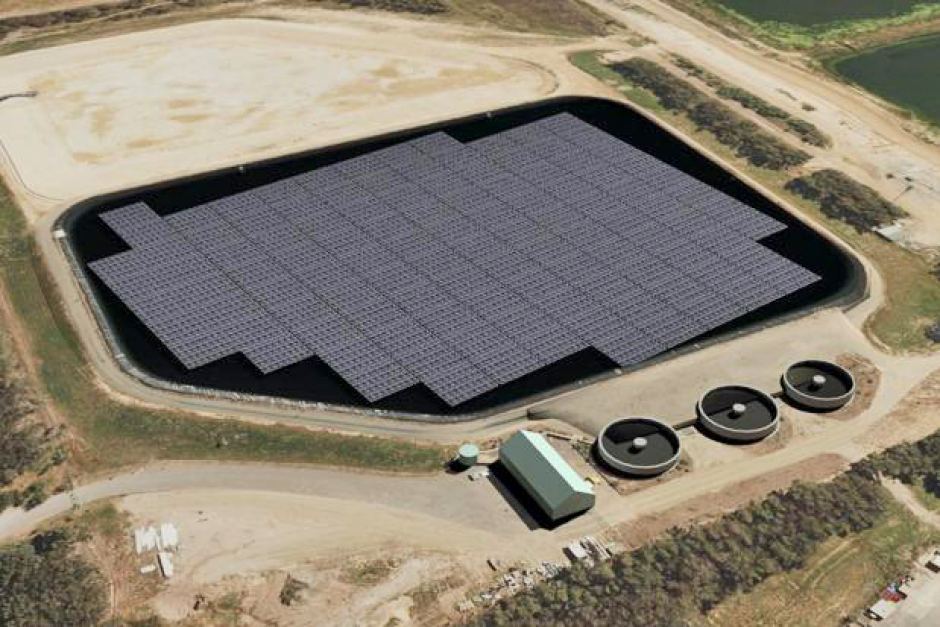Idea floated for innovative solar fix
 A wastewater treatment site in South Australia is looking to solve two problems with one high-tech fix.
A wastewater treatment site in South Australia is looking to solve two problems with one high-tech fix.
A proposal has been made to build a floating solar array over the water reservoir to provide power while blocking evaporation.
Australian firm Geits ANZ is behind the proposal, and company director Felicia Whiting says it could provide at least 50 per cent more power than a land-based solar system.
“It’s very much like a traditional solar array with the exception that it's designed to float on the water,” she told the ABC.
“The mass of water has a cooling effect on the panels and we also include a cooling system utilising the water body itself to be able to keep the water panels ... at a constant temperature.
“When that happens, you get a longer life of the photovoltaic panels and you get a greater efficiency,” Ms Whiting said.
The system is not all that different from one on any normal terrestrial site, though it has a couple of special considerations.
“The system is designed from a HDP [high-density polyethylene] pipe, which is the buoyancy, and it has a structural steel pontoon sitting abreast that and then the PV [photovoltaic] panels slot into the structural system,” Whiting said.
“It's like a racking system with buoyancy.”
But there are key benefits to the flotilla of power, stopping evaporation being one.
Geits ANZ’s international parent company has a number of floating solar array working atop bodies of water in France, Italy and Korea, all of which have seen the compounded improvements of the design.
“We're at about 90 per cent water evaporation prevention for the surface area that we cover,” Ms Whiting said.
“In a dry climate like South Australia that's about 2.5 metres of water evaporation depth annually that you're saving.
“It's a world-first for putting a system of this nature on a treated wastewater plant basin.”
“We've spent a long time looking at the applications in Australia and specifically we've adapted the technology for the community wastewater treatment plant basin,” Ms Whiting said.
“We're also looking at adapting systems for reservoirs or dams and other irrigation as well.”
It is hoped that the electricity produced will be able to supply the entire waste treatment plant, as well as a nearby timber mill and even some homes in the nearby Jamestown community in South Australia’s mid-north.
Geits ANZ says it can solve several local problems in a way that is beneficial to all.
“There is a water quality and water security problem in Northern Areas Council and Jamestown,” Ms Whiting said.
“We went to the Local Government Association and close to a year ago we were looking for a partnering council to be able to develop the technology.
“We've been working with the council to integrate a system with the water treatment plant operations,” she said.
The prefabricated system could be installed quite quickly, if the appropriate approvals are granted.
Geits hopes construction will start in the second half of this year.









 Print
Print